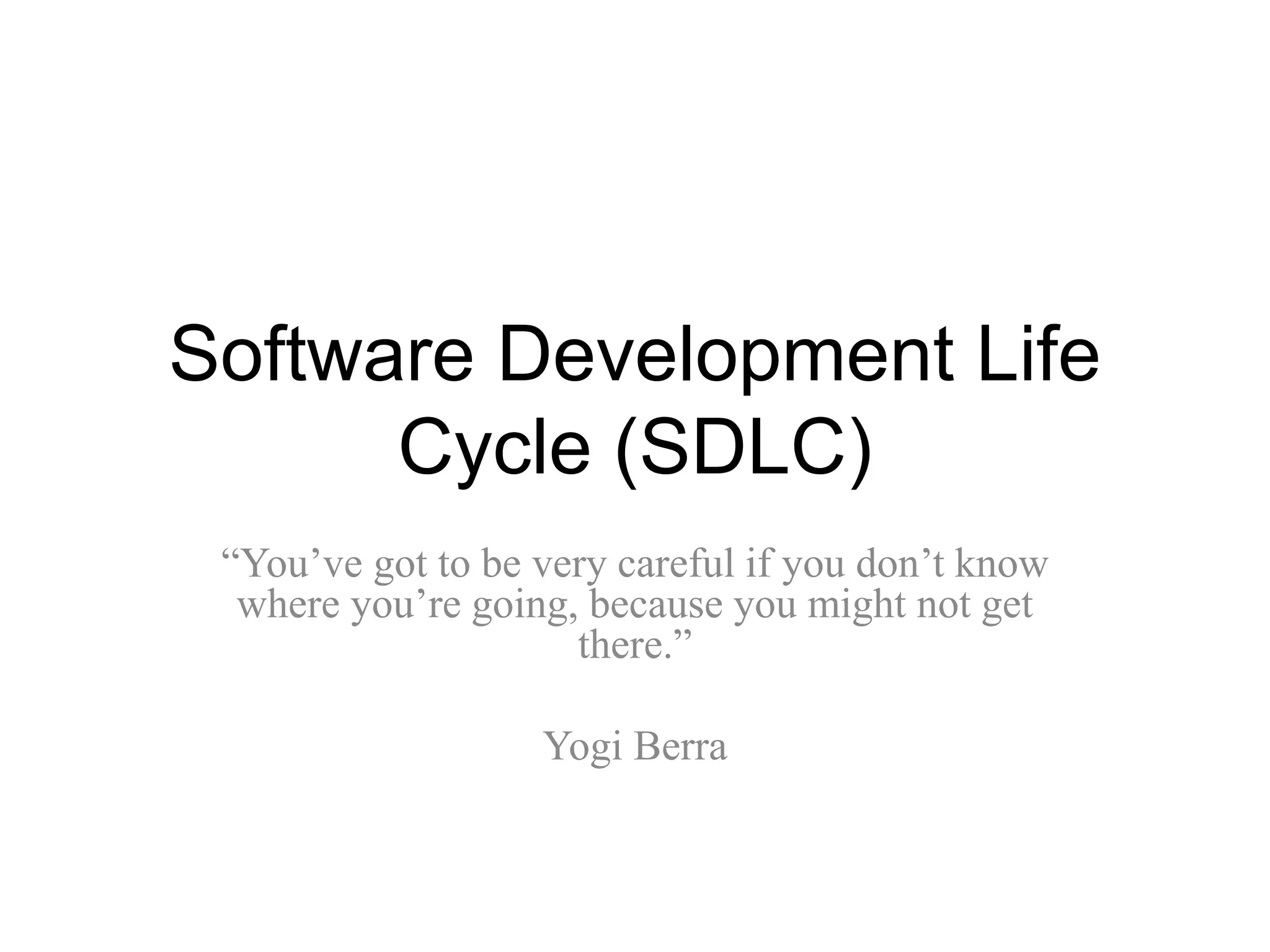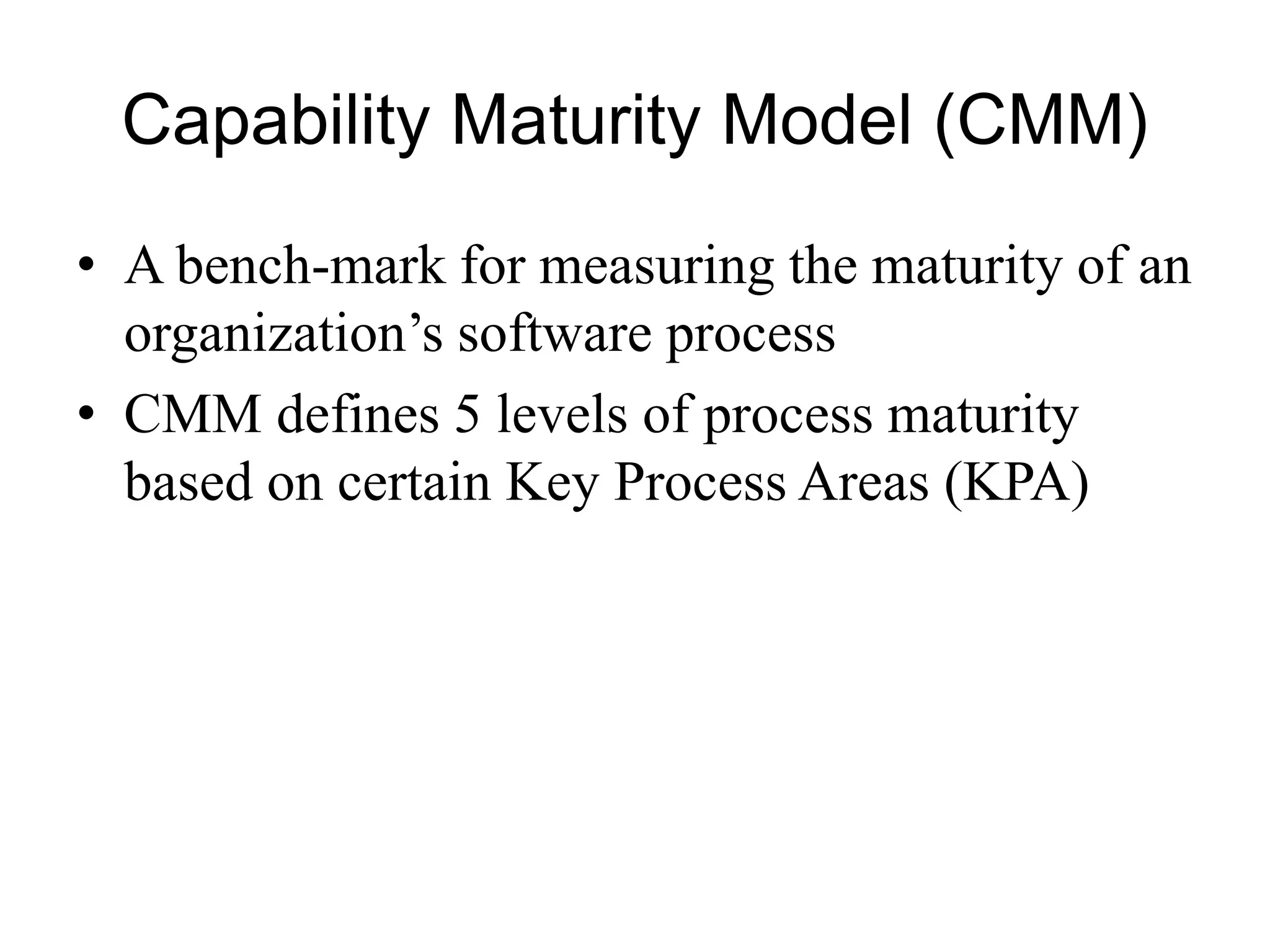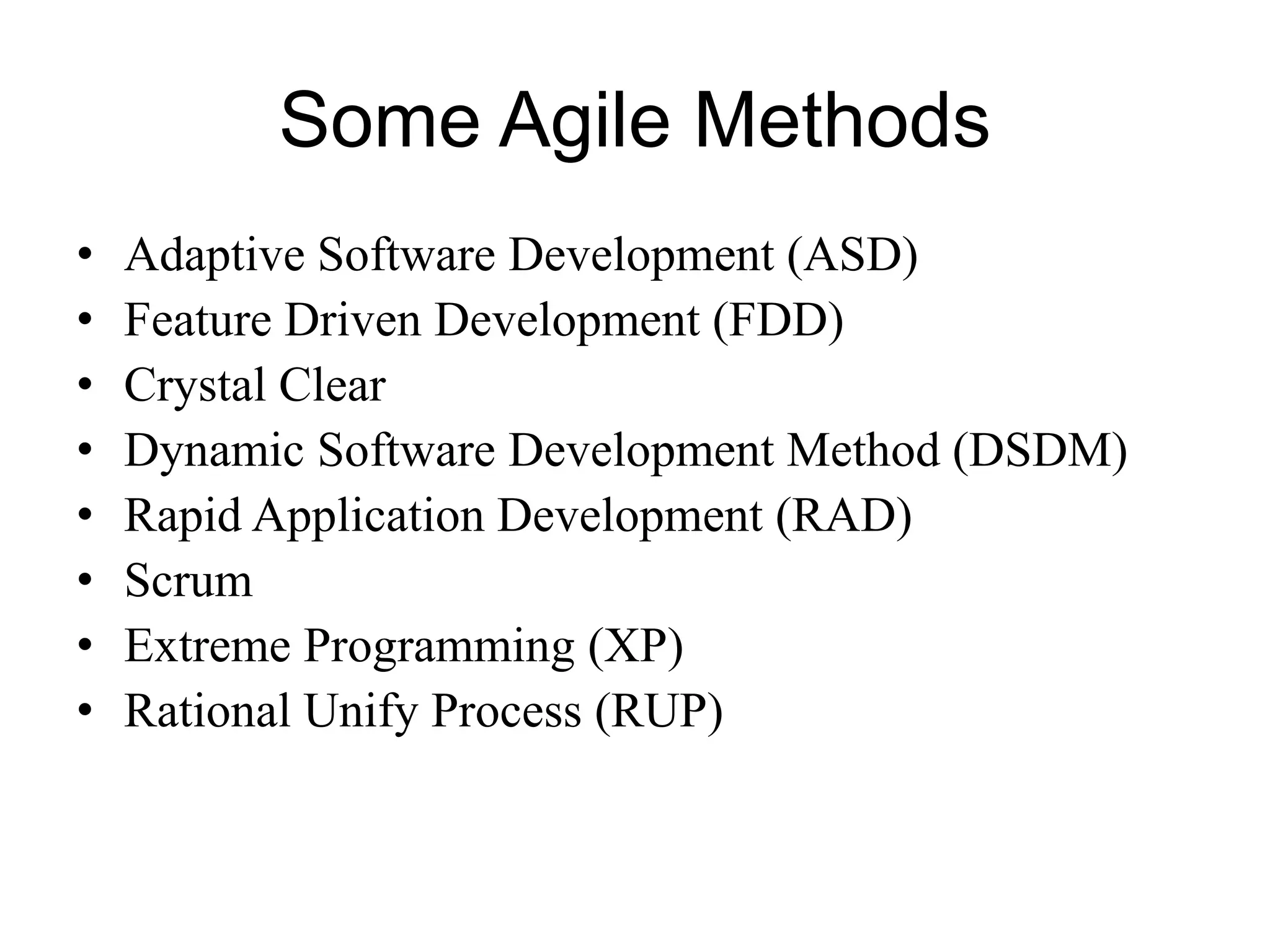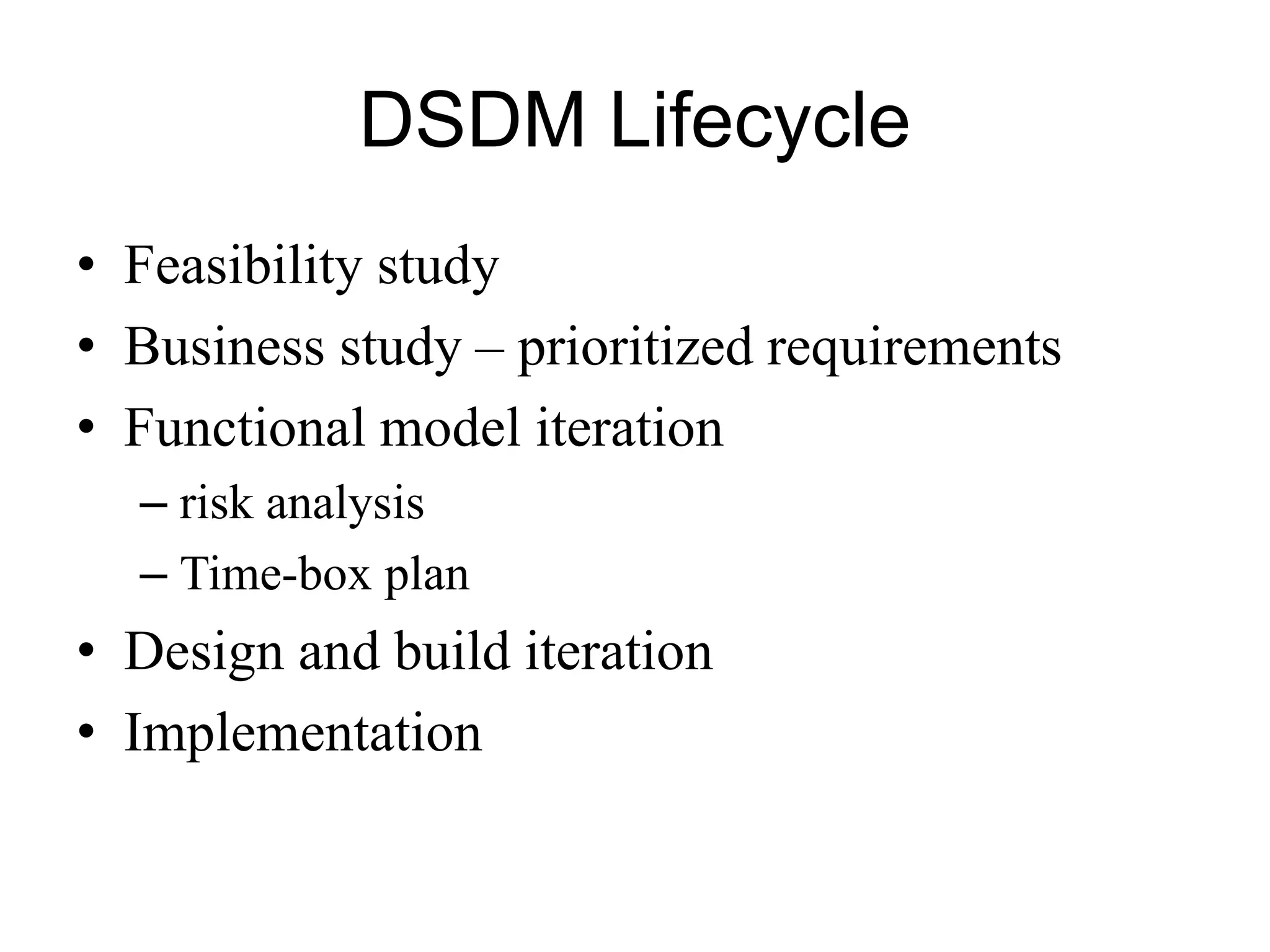The document discusses various software development life cycle (SDLC) models including waterfall, V-shaped, prototyping, rapid application development (RAD), incremental, spiral, and agile models. It provides details on the key steps, strengths, weaknesses, and scenarios for using each model. It also discusses quality assurance plans and techniques to ensure quality like defect tracking, unit testing, code reviews, integration testing, and system testing.

















































